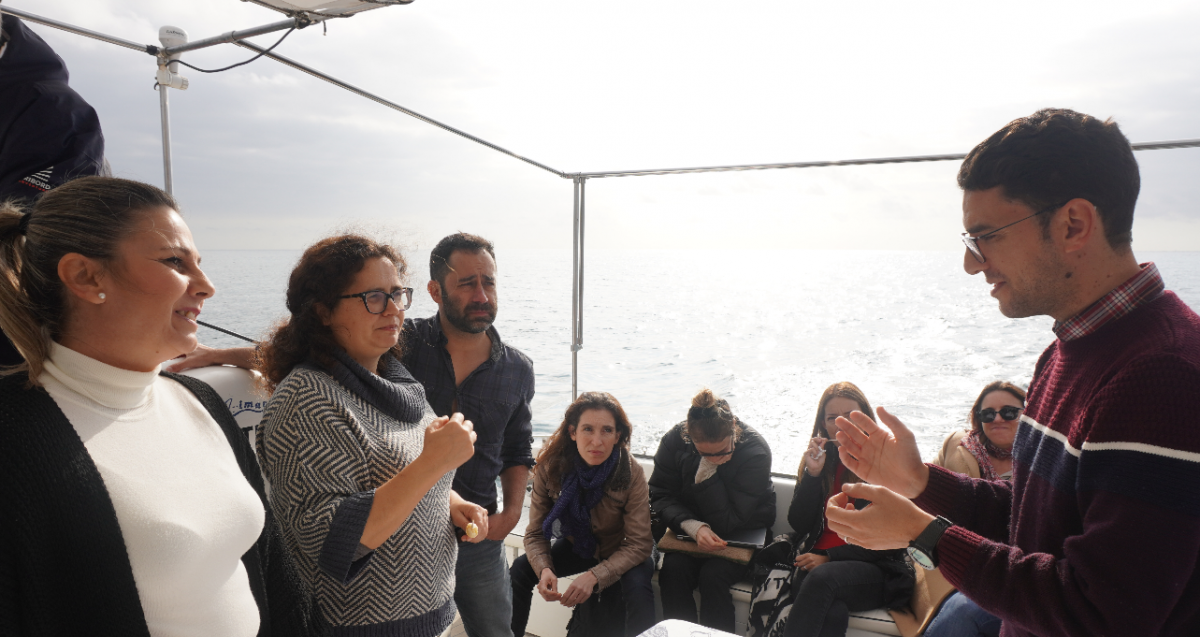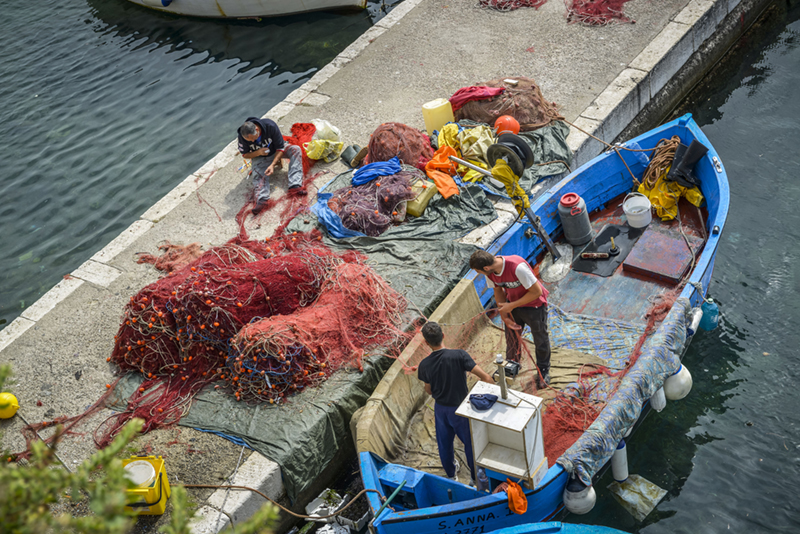Keystone initiatives supporting just and sustainable blue transitions in Small Scale Artisanal Fisheries in the Pacific of Costa Rica
CEESP News: Judith Baetaa & Cristina Chaminadeb
This contribution presents some key initiatives supporting blue transitions in the Pacific of Costa Rica and discusses the challenges that the adoption of these initiatives bring to NGOs supporting communities of Small-Scale Artisanal Fisheries.
1. Introduction
The blue economy emerged in the 2012 Rio+20 UN Conference for Sustainable Development as a paradigm to reconcile human wellbeing and social equity with environmentally sustainable economic opportunities associated with marine environments. However, the initial emphasis on wellbeing and social equity has been gradually lost over time. In this context, recent research efforts are addressing the need to actively (re)incorporate aspects of social and environmental justice to ensure a sustainable and equitable blue economy 1,2. Within this emerging line of research, we investigated initiatives in the Pacific Coast of Costa Rica that have the potential to foster agency within Small-Scale Artisanal Fisheries (SSAF) and strengthen the social tissue of these communities for a just and sustainable blue transformation.
2. Costa Rica’s blue economy: ambitions and challenges
Costa Rica is globally recognised for its leadership in environmental policy. With a marine extension ten times larger than its terrestrial surface, the country has the potential to become a “blue leader”. However, intensive exploitation of fisheries in the last decades, particularly in the high-productive regions of the Pacific coast, has led to resource scarcity and ecosystem deterioration, which disproportionately affects vulnerable coastal communities. Today, coastal communities present the highest levels of absolute and relative poverty, which have worsened after the Covid pandemic, particularly amongst women, youth and people with lower formal education levels. In this context, enacting transformations that are both just and sustainable becomes not only urgent, but necessary.
According to official statistics, in 2021 SSAFs represented 68% of the 2,895 official fishing licenses in Costa Rica. However, it is estimated that over 15,000 artisanal fishers operate informally, which has important socio-economic consequences for SSAF communities. Pressing environmental, social and economic challenges currently faced by SSAF include excessive dependence on already scarce natural resources, higher vulnerability to ecosystem degradation, power imbalances in the value chain, exclusion from governance structures and a strong cultural component of individualism that can undermine emancipative efforts of community organisations. Issues of gender inequality are still latent, especially at the household level. In this setting, we examined seven SSAF communities in the Pacific of Costa Rica to identify current initiatives with the potential to enable just and sustainable blue transformations. Primary data was collected on-site through semi-structured interviews in March-April 2022.
3. Keystone initiatives with potential to enable just and sustainable blue transformations in SSAF in Costa Rica
Initiatives with the highest potential to enable a just blue transition of SSAF in Costa Rica are those related to co-management models of sustainable fisheries and the diversification of economic activities, as presented next.
Co-management solutions
A new model of collaborative and shared governance based on Marine Areas for Responsible Fishing (Áreas Marinas de Pesca Responsable, AMPR) reconciles the protection of marine and coastal resources and the socio-economic needs of SSAF communities. SSAF communities can proactively request the delimitation of an area and participate in the elaboration and implementation of the management plan. AMPRs are an important first step towards empowering communities to have an active role in the conservation of marine resources and promote responsible fishing practices. However, the varying outcomes of these areas shows that strong organisational and leadership capabilities within SSAF communities is a crucial factor to ensure success. Additionally, support from external organisations, mainly NGOs, has been fundamental in providing economic resources, equipment and technical advice. Similarly, the proliferation of community-led fish collection and commercialisation centres has also enabled artisanal fishers to break free from intermediaries’ monopolistic power, promote fair compensation and create formal employment opportunities in the community, especially for women whose work in the value chain typically goes unrecognised.
From left to right: (1) Private fish intermediary in Isla Chira; Community-led collection and commercialisation centres in (2) Puerto Pochote and (3) El Jobo. Photos: Judith Baeta.
Alternative economic activities
The diversification of economic sources is key to strengthening the resilience of SSAF communities. With support from external organisations, aquiculture has progressively gained acceptance from communities that initially were reluctant to invest in unknown projects and products. Additionally, some SSAF communities are increasingly engaging in community-based rural tourism which seeks to provide visitors a taste of the rural lifestyle including their SSAF culture and traditions, productive practices, gastronomy, crafts, etc. A commonality across alternative economic initiatives is the greater participation of women, as these initiatives are generally introduced to complement male-dominated traditional fishing activities. As a result, women’s contribution to the community is becoming more visible leading to a process of female empowerment through increased financial independence and the creation of spaces of participation in governance structures.
Oyster cultivation projects. From left to right: Isla Chira, Isla Venado and El Jobo Photos: Judith Baeta.
Examples of community-based rural tourism projects. From left to right: Cuajiniquil, Isla Venado, Isla Chira. Photos: Judith Baeta.
4. Final reflections on the role of NGOs and other external organizations
NGOs and other external organisations have actively participated in co-creating some of the above-mentioned solutions to support SSAF communities in the just blue transition. Ultimately, this challenges the way in which SSAFs have traditionally been approached, which has led to external dependencies and lack of community empowerment. In the case of environmental NGOs, a more integrated approach to sustainable development has required paying more attention to social and economic aspects. The study also reveals that while several external actors work to foster agency in SSAFs through different initiatives, these contributions often lack coordination leading to overlaps and inefficiencies. Instead, there is a need for more collaborative efforts across stakeholders given the complexity and interrelatedness of many of the challenges identified by this work.
References:
1. Bennett, N. J. et al. Towards a sustainable and equitable blue economy. Nat. Sustain. 2, 991–993 (2019).
2. Cisneros-Montemayor, A. M. et al. Social equity and benefits as the nexus of a transformative Blue Economy: A sectoral review of implications. Mar. Policy 109, 103702 (2019).
Affiliations:
aNoima, Sustainability Strategies
bProfessor, Lund University, School of Economics and Management and CEESP member



